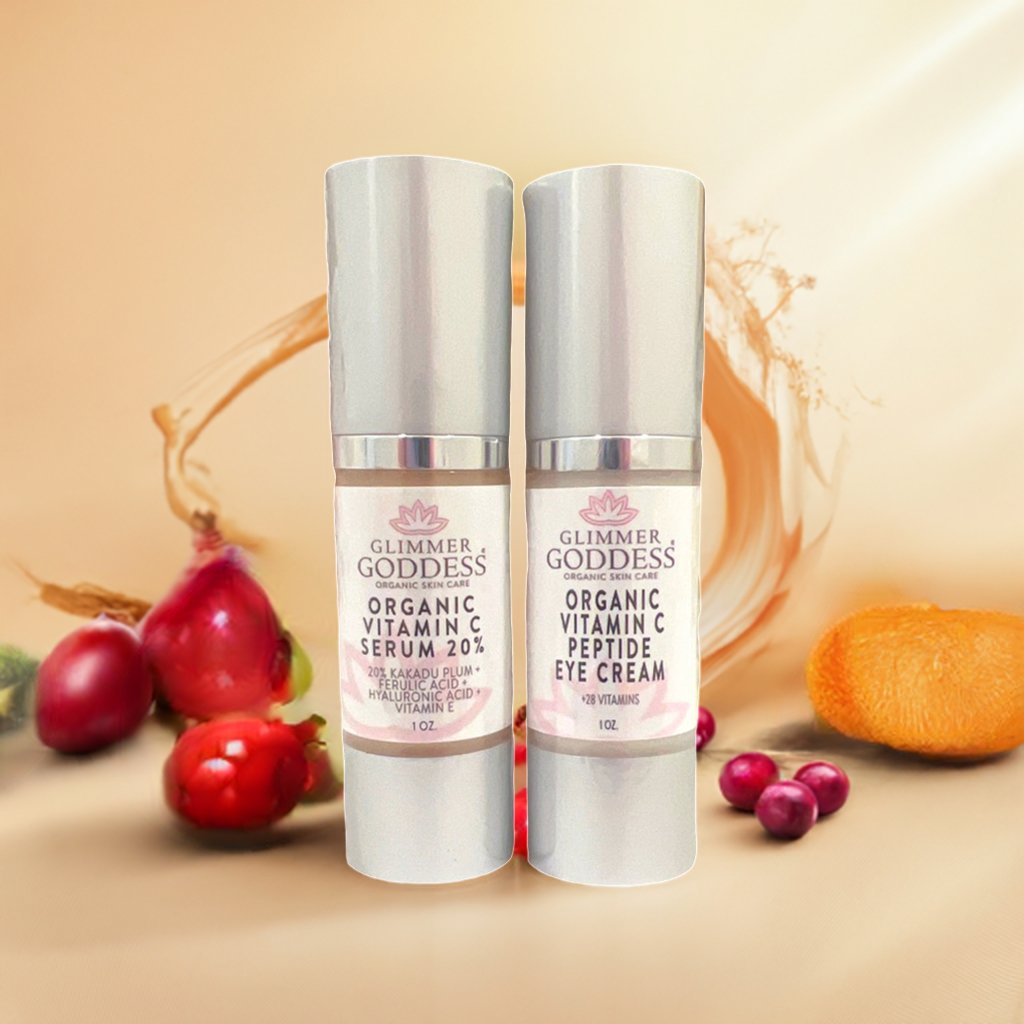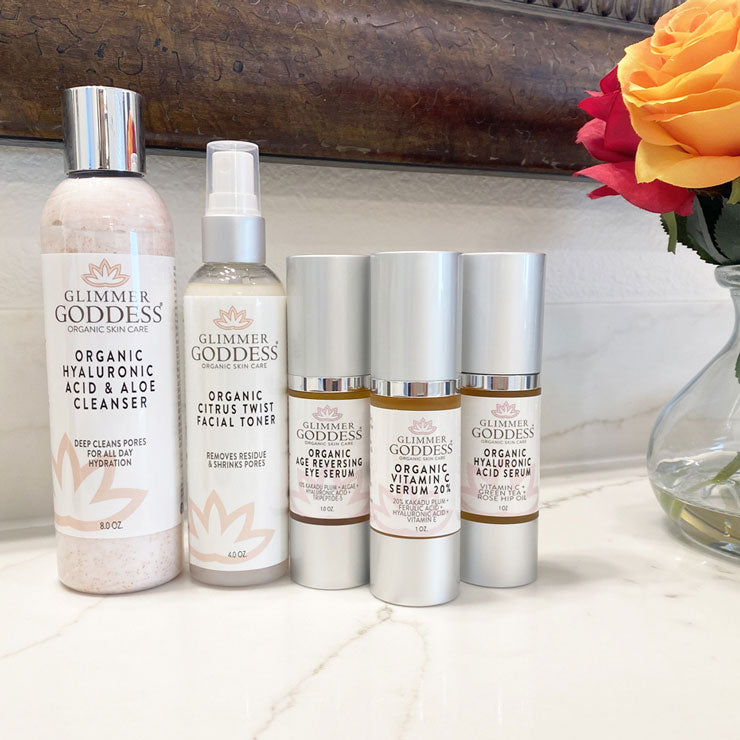
Organic Vitamin C Serum + Eye Cream Guide for Brighter Skin
Let's Get Glowing! The Essential Guide to Vitamin C Serum & Eye Care
Vitamin C serums are everywhere — from high-end clinics to drugstore shelves. If you're trying to figure out what they do, how to use them, and which one is right for you, this guide breaks it down in plain language and practical tips so you can get visible results without guesswork.
What is a Vitamin C serum?
Vitamin C serum is a concentrated skincare product that delivers active vitamin C (ascorbic acid or its derivatives) to the skin. It's formulated to brighten the complexion, help even skin tone, protect against free radical damage, and support collagen production. Many serums also include complementary ingredients like vitamin E, ferulic acid, peptides, or hyaluronic acid to boost stability and performance.
Common questions people search for
1. Where can I buy vitamin C serum (e.g., Priceline or Chemist Warehouse)?
Retailers like Priceline and Chemist Warehouse often stock a wide range of vitamin C serums at different price points — from budget-friendly formulas to premium clinical-strength products. When buying from these stores, check:
- Product concentration (pure vitamin C like L-ascorbic acid often appears as % on the label).
- Expiration or manufacture date (vitamin C can oxidize and turn less effective or discolored).
- Active ingredients and packaging — dark or airless pumps help preserve the serum.
If you're buying in-store at major retailers or online, stick to authorized sellers to ensure authenticity and avoid expired or counterfeit items.
2. How does a vitamin C serum compare to well-known formulas (Skinceuticals CE Ferulic, Dermalogica)?
High-end serums like Skinceuticals CE Ferulic are praised for clinically studied concentrations and stable antioxidant blends (vitamin C + E + ferulic acid). Dermalogica and other professional brands offer formulations aimed at sensitive or problem skin with additional soothing actives. The main differences to consider:
- Concentration and form of vitamin C (L-ascorbic acid is potent but can be more irritating; derivatives can be gentler).
- Complementary actives (ferulic acid boosts antioxidant effect; peptides target firmness and lines).
- Price vs. value — premium brands may cost more but can offer research-backed stability and textures.
Ultimately, choose a formula that matches your skin type, sensitivity, and budget. Look for stabilizing ingredients and protective packaging for best results.
3. What is "Skin Solutions C and E" and how is it different?
"C and E" formulations combine vitamin C with vitamin E (alpha tocopherol). Vitamin E helps recycle and stabilize vitamin C, strengthening antioxidant benefits and reducing irritation for some users. These combos are excellent if you want antioxidant protection with a smoother, less reactive feel.
Under-eye concerns: Can vitamin C help dark circles and fine lines?
Yes — vitamin C plus targeted peptides can improve the appearance of under-eye darkness and fine lines over time by:
- Brightening skin tone and reducing pigmentation.
- Supporting collagen production to firm the delicate under-eye area.
- Reducing oxidative stress that contributes to thinning and crepe-like texture.
Formulas that include peptides like Argireline, Tripeptide-5, or Palmitoyl Oligopeptides are specifically designed to boost collagen and reduce the look of crow's feet. For a convenient daily routine, consider using a daytime vitamin C serum on the face and a peptide-rich vitamin C eye serum under the eyes.
How to use vitamin C serum safely and effectively
- Cleanse: Start with a clean face.
- Apply serum: Use a few drops of vitamin C serum on the face (avoid direct contact with eyes). For delicate under-eye skin, use a dedicated eye serum with peptides.
- Layering: If you use other active ingredients (retinol, acids), introduce vitamin C slowly and monitor tolerance. Common routine: vitamin C in the morning, retinol at night.
- Sunscreen: Always follow with broad-spectrum SPF in the morning — vitamin C and sunscreen together provide powerful protection against UV-induced damage.
- Storage: Keep in a cool, dark place and discard if the serum darkens or smells off.
How long until I see results?
While some users notice immediate brightening within days, visible changes in texture, fine lines, and pigmentation typically appear in 4–12 weeks with consistent daily use. Patience and consistency are key — use as directed and pair with sunscreen for best long-term results.
Choosing the right product — a practical recommendation
When selecting a serum, balance potency with tolerance. If you want a complete duo that addresses both face and under-eye concerns — antioxidant protection, blemish and sun damage correction, plus peptide support for under-eye dark circles and lines — try this carefully formulated set:
Quick troubleshooting & tips
- If you experience irritation: Reduce frequency to every other day, or switch to a lower concentration or derivative form of vitamin C.
- For sensitive under-eyes: Use an eye-specific product with peptides and hydrating ingredients rather than applying a full-strength face serum directly under the eye.
- Want to maximize results: Combine vitamin C with moisturizers containing peptides and hyaluronic acid, and protect with daily SPF.
Vitamin C serums are one of the simplest, most effective steps you can add to your routine for brighter, healthier-looking skin. With the right formula, consistent use, and sun protection, you’ll notice more radiance and improved texture over time.
Ready to glow? Start with a stable, well-packaged formula and a gentle eye peptide serum to support delicate under-eye skin — consistency wins.










